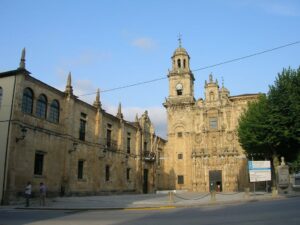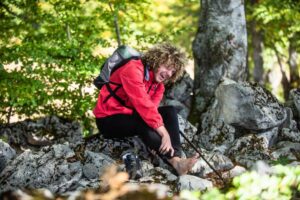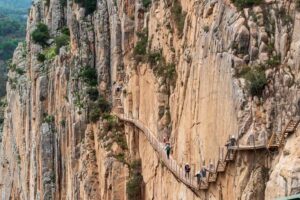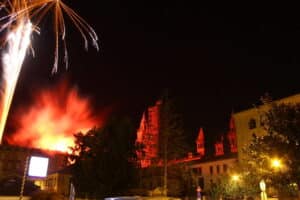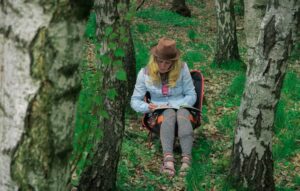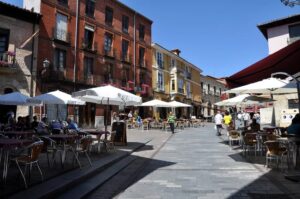
Lourenzá is a small town in the interior of the Lugo province in Galicia, located in the picturesque Masma River valley in the Mariña Lucense region. It is a notable stop on the Camino de Santiago Norte, and although it is not a mass tourism hub, it offers pilgrims charming corners and traditions that are well worth a pause.
Many pilgrims pass through the town quickly, but if you have some time, you’ll discover that what to see in Lourenzá goes beyond its rural tranquillity. Whether you are walking the route on your own or with the help of a Camino de Santiago organised trip service, you’ll want to learn about the main attractions of this place.
Below, we will tell you about the points of interest, the culture, and the natural surroundings that make it a pleasant stop for walkers.
Índice de contenidos
Points of Interest in Lourenzá and Surroundings
Monastery of San Salvador de Lourenzá

Without a doubt, the most iconic monument in Lourenzá is its ancient Benedictine monastery of San Salvador. It was founded in the 10th century by Count Osorio Gutiérrez, known as the Holy Count, who is buried here in a marble sarcophagus.
The current building of the monastery dates back to the 17th-18th centuries and is in the Baroque style, with an impressive stone façade flanked by two towers (one of which is unfinished). In fact, this façade is considered a precursor to the famous Obradoiro façade of the Santiago Cathedral.
The monastic complex includes the church (now a parish church), two cloisters, several chapels (such as Valdeflores and the Virgin of Valvanera), the abbot’s chamber, the Holy Count’s courtyard, and a Sacred Art Museum. The monastery was declared a Historical-Artistic Monument in 1974, and it currently even houses municipal offices of the town.
The Cathedral of Mondoñedo
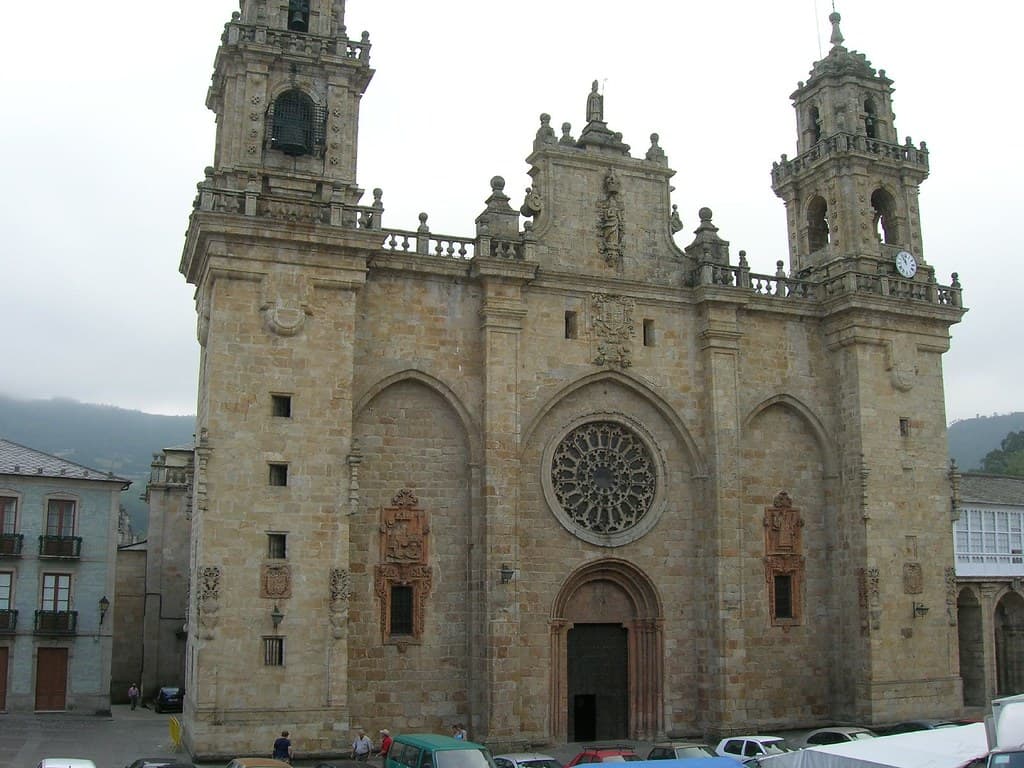
Just 9 km away is the city of Mondoñedo, the next stage of the Camino. There, you can admire its Basilica Cathedral of the Assumption, a historical and artistic gem that many pilgrims visit the day after passing through Lourenzá. Known as the Kneeling Cathedral due to its low proportions, it was originally built in the 13th century and has held the title of National Monument since 1902.
In the Romanesque style with Gothic and Baroque additions, it stands in a beautiful cobbled square dominated by a statue of the writer Álvaro Cunqueiro. Its two symmetrical towers and rose window will welcome you when you arrive in the city.
It is worth strolling around the cathedral’s surroundings, enjoying the tranquillity of this small episcopal capital, and perhaps visiting its cathedral museum. Although you will walk here in the next stage, knowing its importance beforehand will encourage you not to miss it: it is one of the heritage treasures of northern Galicia.
The Faba de Lourenzá
Beyond architectural elements, Lourenzá is particularly famous for an agricultural product: the faba de Lourenzá, a local variety of bean that has gained great renown in Galician cuisine. In fact, it is the only legume in Galicia with its own Protected Geographical Indication, a recognition obtained in 2008 that guarantees its quality and fame.
The most typical dish of the area is fabas a la Lourenzá, a stew made with these beans, usually cooked with meats, that delights hungry pilgrims. If you have the chance to try it at a local inn, don’t hesitate: it’s a true culinary souvenir.
Lourenzá honours its star legume with the Fiesta de la Faba, a gastronomic and cultural event held every year on the first weekend of October. This festival was first held in 1990 to promote the consumption of the local faba, and over the years it has grown to be declared a Fiesta of Tourist Interest (a recognition granted in 2001 by the Xunta de Galicia).
Even outside of the festival, Lourenzá is home to a Centro de Interpretación da Faba, which was inaugurated in 2004. Here, you can learn about the traditional agricultural techniques for cultivating and preserving this special legume. The centre includes several exhibition rooms (history of cultivation, audiovisuals, library, etc.).
Francisco Fernández del Riego Literary Route
Culturally, Lourenzá is also the birthplace of distinguished figures. One example is Francisco Fernández del Riego, a writer, editor, and intellectual born here in 1913. He was one of the promoters of the Día das Letras Galegas and a prominent figure in 20th-century Galician culture. In his honour, the local council has designed a small literary route that takes you through the streets and spots connected to his life.
If you’re interested in literature or local history, you can follow Fernández del Riego’s steps through his hometown: you’ll see his houses, the places where he spent his childhood, and informational panels about his contributions to Galician literature.
Landscapes and Nature in the Val de Lourenzá
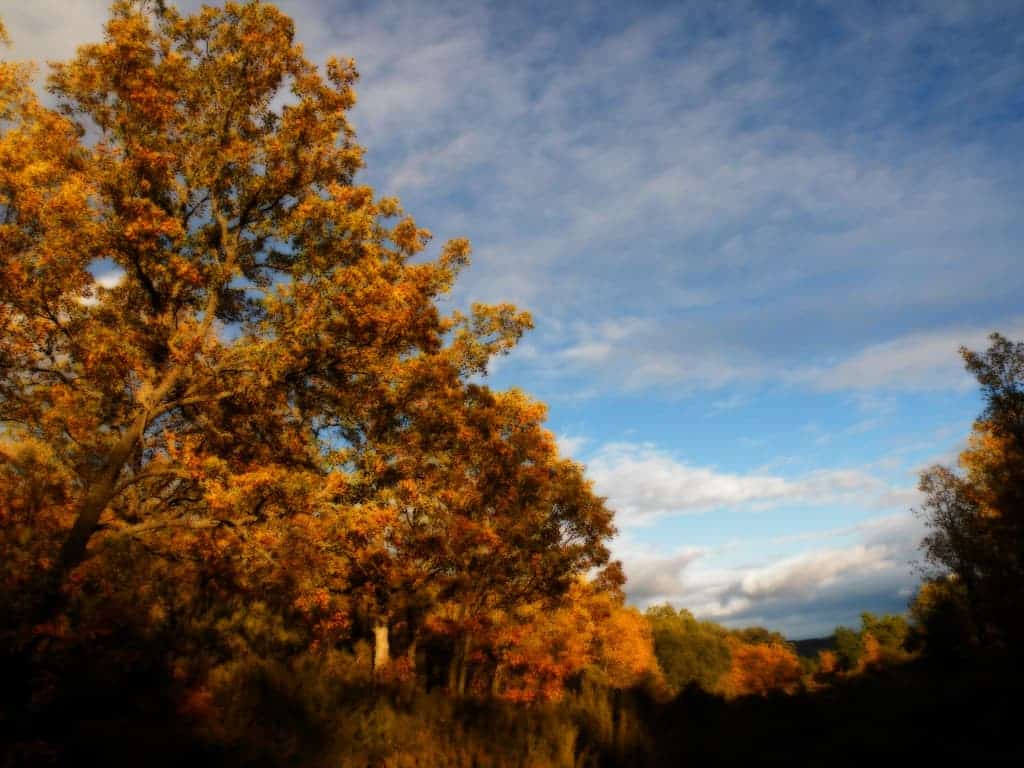
As with the entire Cantabrian coast, one of its charms is its natural surroundings. The valley surrounding the town offers idyllic green landscapes of meadows and forests, all bathed by the waters of the Masma River.
Very close to the town centre is the Cazolga area, a popular fishing spot that features a historic bridge built in 1796 over the river. This corner is especially picturesque and attracts both fishing enthusiasts and those who enjoy photography and the tranquility by the river.
If you enjoy hiking and decide to take a break, you can explore the Ruta de Senderismo Val de Lourenzá. This is a circular route that covers the most beautiful natural spots in the area. The route, which lasts around 3 to 4 hours, takes you through local forests and hills. It’s best to do it when the weather is good and dressed in comfortable clothes.
The Northern Way: Why Choose This Route?
Lourenzá is part of the Camino de Santiago del Norte, which runs along the entire Cantabrian coast from Irún to Santiago de Compostela. Many pilgrims wonder what sets this route apart from other alternatives.
One of its recognised advantages is that it is a less crowded route. Here you’ll find fewer crowds, which translates into more tranquillity, greater availability in hostels, and perhaps a more introspective experience. The infrastructure is slightly more basic compared to other routes, but don’t worry, it’s enough to meet the needs of the average pilgrim.
Another major attraction is its coastal and mountainous landscapes. This route offers a unique combination of sea and mountains across its stages: you’ll walk along cliffs overlooking the Cantabrian Sea, passing through solitary beaches, estuaries, and green forests that alternate as you head inland. The landscape beauty of this route is incomparable, with panoramas where the blue of the Cantabrian Sea blends into the horizon with the green of the Basque, Cantabrian, Asturian, and Galician hills.
A notable example is the stretch of the Camino de Santiago from Santander to Gijón, which takes the pilgrim through some of the most beautiful fishing villages in the north (such as Santillana del Mar, Comillas, Llanes) and offers unforgettable views of vast beaches, blowholes, and steep cliffs along the coast.
Another strong point of this route is its cultural and gastronomic variety. By crossing four autonomous communities, the pilgrim experiences the diversity of green Spain: they can taste everything from pintxos to mountain stews, fabada, and seafood. In fact, northern cuisine often leaves an indelible memory in those who enjoy it during their walk.
Each region contributes its customs, folklore, and artistic heritage, enriching the pilgrimage. The Camino del Norte has a physically demanding itinerary due to its continuous changes in elevation in certain mountainous stages. However, the reward of solitary landscapes, sea breezes, and the authenticity of the villages it passes through makes the effort worthwhile.
What Sets It Apart from Other Jacobean Routes
- The Camino Francés is the most famous and frequented. From Roncesvalles or Saint-Jean-Pied-de-Port, it crosses the entire plateau to Galicia. It has the most complete infrastructure (hostels, signage, services), making daily logistics easier, and is perfect for those who value the company of other pilgrims. However, the crowds during peak season may take away from the sense of solitude that some seek.
- The Camino Portugués is the second most walked route after the Francés. It can be done via the inland route or along the coast, and in both cases, it offers a more gentle path, with comfortable stages, good signage, and a temperate climat.
- The route from Oporto to A Guarda allows you to experience an international Camino, starting in Portugal and entering Galicia from the south, with coastal stretches that will captivate you.
- From A Guarda, many continue on the Camino from A Guarda to Santiago. This is an ideal option for those with one or two weeks who want to enjoy the sea, fishing villages, and good atmosphere.
- Another option is the Camino Primitivo, considered the oldest. From Oviedo, it crosses the Asturian mountains to join the Francés in Melide. It is physically demanding, with many elevations, but very authentic and solitary. It is often chosen by experienced walkers or those seeking a less conventional route.
- On the other hand, the Camino Inglés is perfect if you only have a few days. It starts from Ferrol or A Coruña, and although it is shorter, it still preserves the Jacobean spirit in every stage. Less travelled, with genuine Galician landscapes and an oceanic climate, it can be an alternative for those looking for a brief but meaningful experience.

